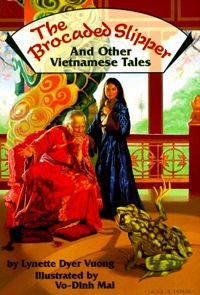By Marilyn Carpenter, Eastern Washington University, Cheney, WA
“Just as the child is born with a literal hole in its head, where the bones slowly close underneath the fragile shield of skin, so the child is born with a figurative hole in its heart. Slowly this, too, is filled up. What slips in before it anneals shapes the man or woman into which that child will grow. Story is one of the most serious intruders into the heart” (Touch Magic by Jane Yolen, p.26).
Fairy tales can be “serious intruders into the heart,” however, children need adults to lead them to tales that have that potential. Children too often only experience the Disney versions of fairy tales. As I was growing up Disney movies popularized and sugar coated the fairy tales but did so in a way that took away the essential nature of the story and turned, for example, Snow White into a passive character singing, “Someday my Prince will Come.” Disney robbed the tales of what Yolen calls their “invigorating magic.” “The story has been falsified and the true meaning lost …” (p. 39).
In this WOW Currents post continuing on the subject of fairy tales, I will explore the following questions regarding fairy tales:
- Why are fairy tales valuable for today’s children?
- How can we as classroom teachers justify sharing folktales when we are mandated with scripted or time-based curriculum and have the pressures of testing?
- How can we answer objections to reading fairy tales in the classroom?


 Fairy tales fueled my imaginary life as a child. In my play I became Snow White, Cinderella, and sometimes even the Prince when my friends insisted they must have a turn at the “main parts.” The romance of the tales captured my interest. Waiting for sleep at night, I would create new versions of the stories, always starring myself as the heroine.
Fairy tales fueled my imaginary life as a child. In my play I became Snow White, Cinderella, and sometimes even the Prince when my friends insisted they must have a turn at the “main parts.” The romance of the tales captured my interest. Waiting for sleep at night, I would create new versions of the stories, always starring myself as the heroine.